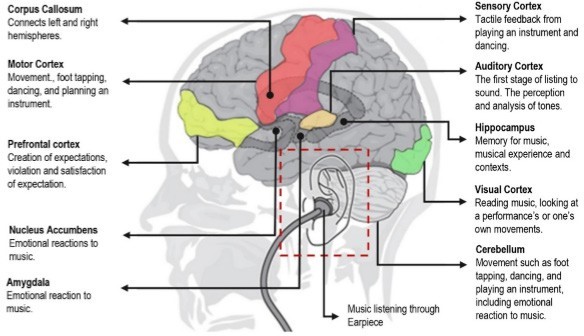Rosetta Stone
September 11, 2020
Acoustics + Physical Health
Talking Points • Research Brief • Collection Database
Acoustics - Physical Health Talking Points
Summary
Acoustics can have significant effect on physical health. Quality acoustics can improve health outcomes for hospital staff as well as patients and their families. Poor acoustics, however, can negatively impact sleep and recovery rates, and contribute to long-term health outcomes such as cardiovascular disease and noise-induced hearing loss.
Keywords
Noise, emotion, health hospital, sound perception, stress reduction, environment
General Physiological Impacts
- Agreeable acoustic conditions with a balance of silence and noise can improve health outcomes (Basner 2014).
- Poor acoustics, however, can negatively impact physical health (Basner 2014).
- Infants in the NICU may exhibit decreased oxygen saturation, elevated blood pressure, increased heart and respiration rate, worsened sleep.
- High noise exposure may also cause increased awakenings, sleep loss, and sleep fragmentation in adults.
- Constant noise exposure increases the rate of patient rehospitalization and medication.
- Noise induced hearing loss and occupational induced hearing loss are increasingly common (Basner 2014).
Improved Health Outcomes
- Masking of ambient hospital sounds, such as beeping machines and wailing alarms, with acoustic treatment and music has numerous health benefits, including the following (Iyendo 2016):
- Facilitation of social connection between staff, patients and their families
- Can elicit positive emotions, which are shown to encourage recovery
- Can induce an analgesic effect, reducing stress, blood pressure and post-operative trauma when matched with silence

Functional neuroimagining studies on music and emotion suggest that music can modulate activity in brain structures that are known to be crucially involved in emotion (Iyendo 2016).
Increased Rate of Medication and Rehospitalization
- Patients in rooms with bad acoustics need additional intravenous beta-blockers much more frequently and the rehospitalization rate at 3 months was also significantly higher (Hagerman 2005).
- Increased medication and rehospitalization, especially of at-risk patient populations, is not only counter-productive to healing, it is also costly in terms of facilities and staffing.
Noise-induced Hearing Loss and Damage
- Global Burden of Disease 2010 estimated that 1.3 billion people are affected by hearing loss and investigators rated hearing loss as the 13th most important contributor (19.9 million years, 2.6% of total number) to the global years lived with disability (Basner 2014).
- Occupational noise-induced hearing loss is well recognized in industrial settings like construction and manufacturing, but occupations such as musicians, those working in the military, or aeronautics are more significantly affected.
- Noise levels in hospitals are typically more than LAeq 15–20 dB higher than recommendation by World Health Organization, which could increasingly threaten patient rehabilitation and staff performance (Basner 2014).
Key References
